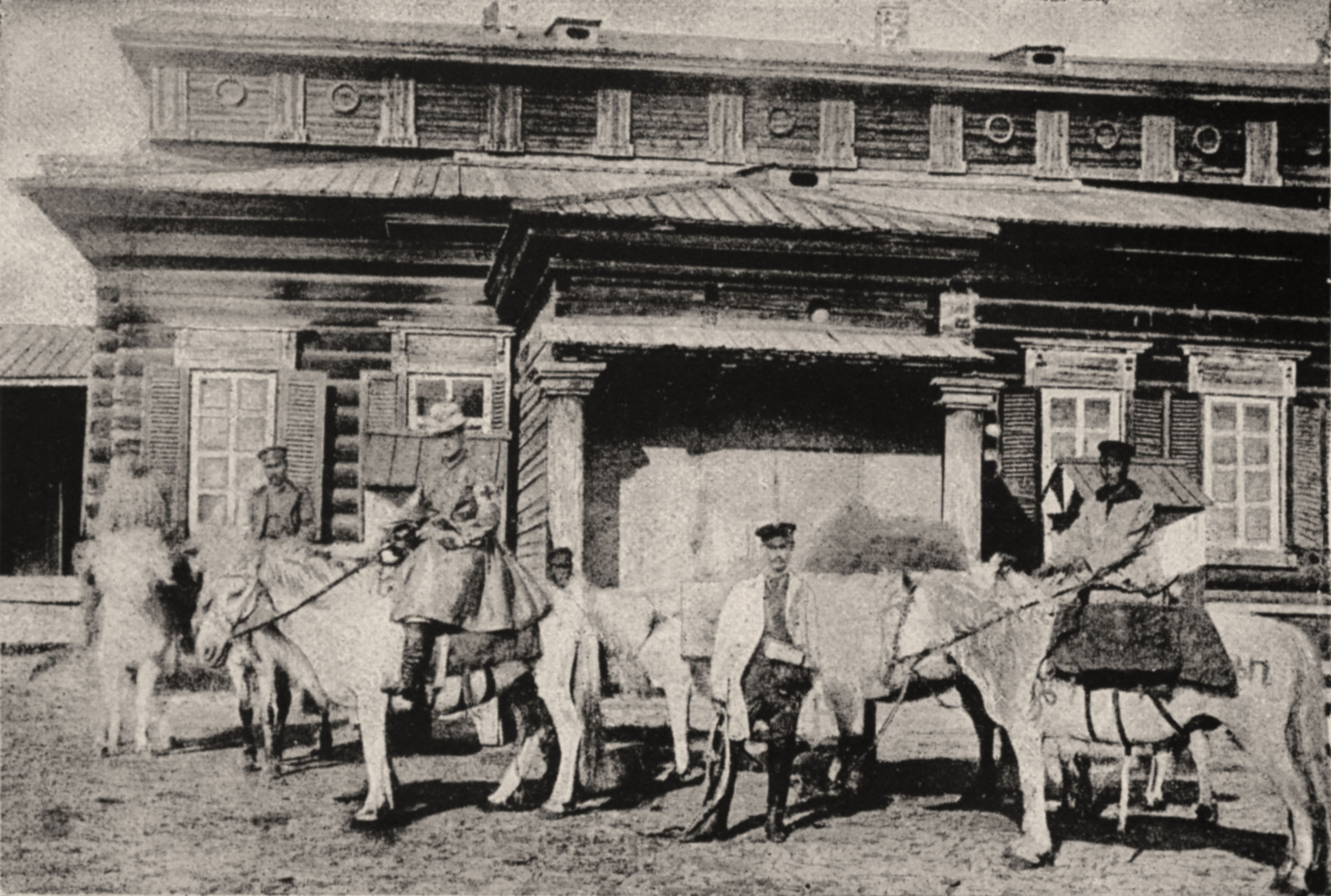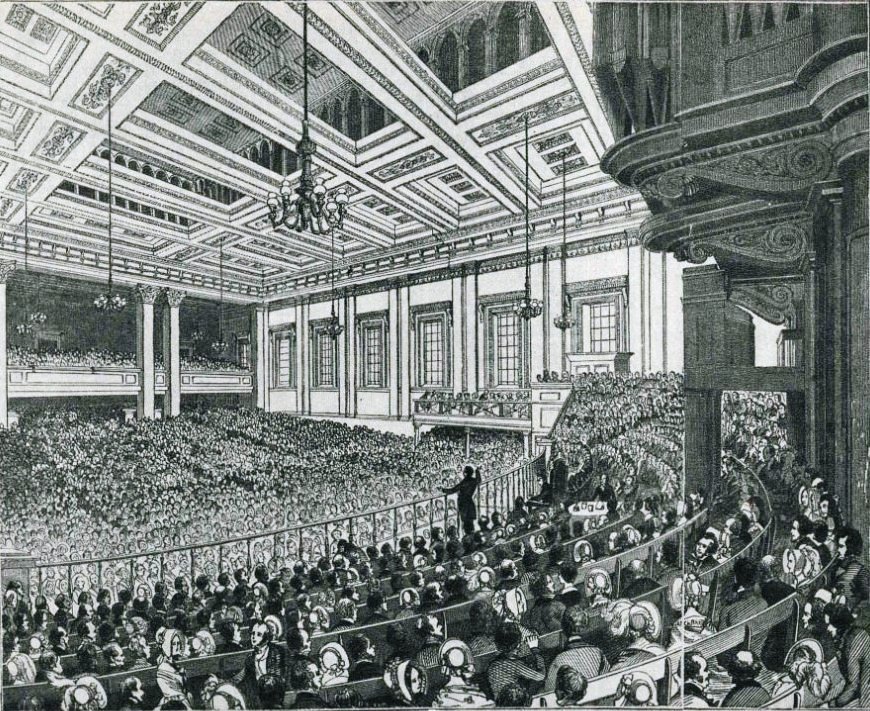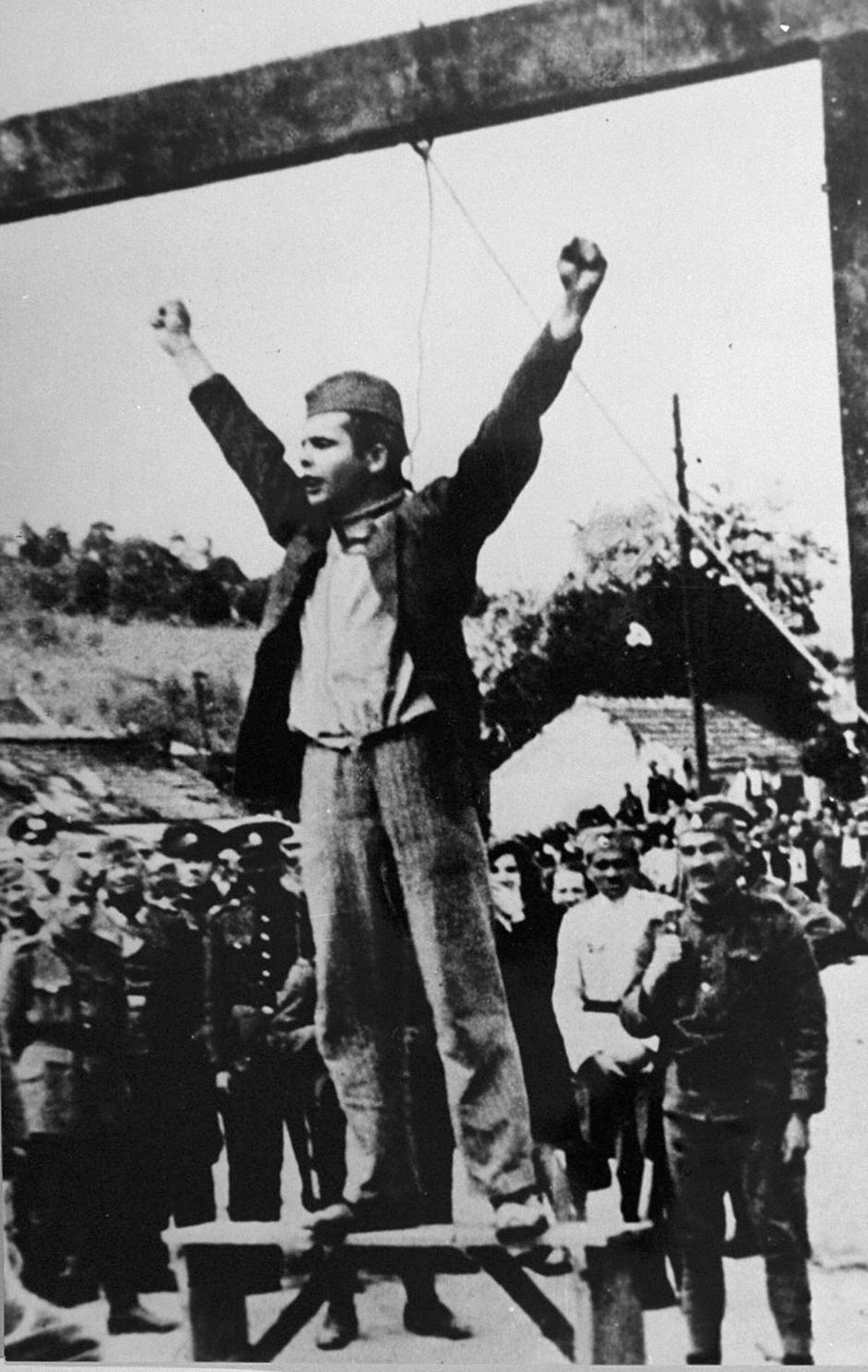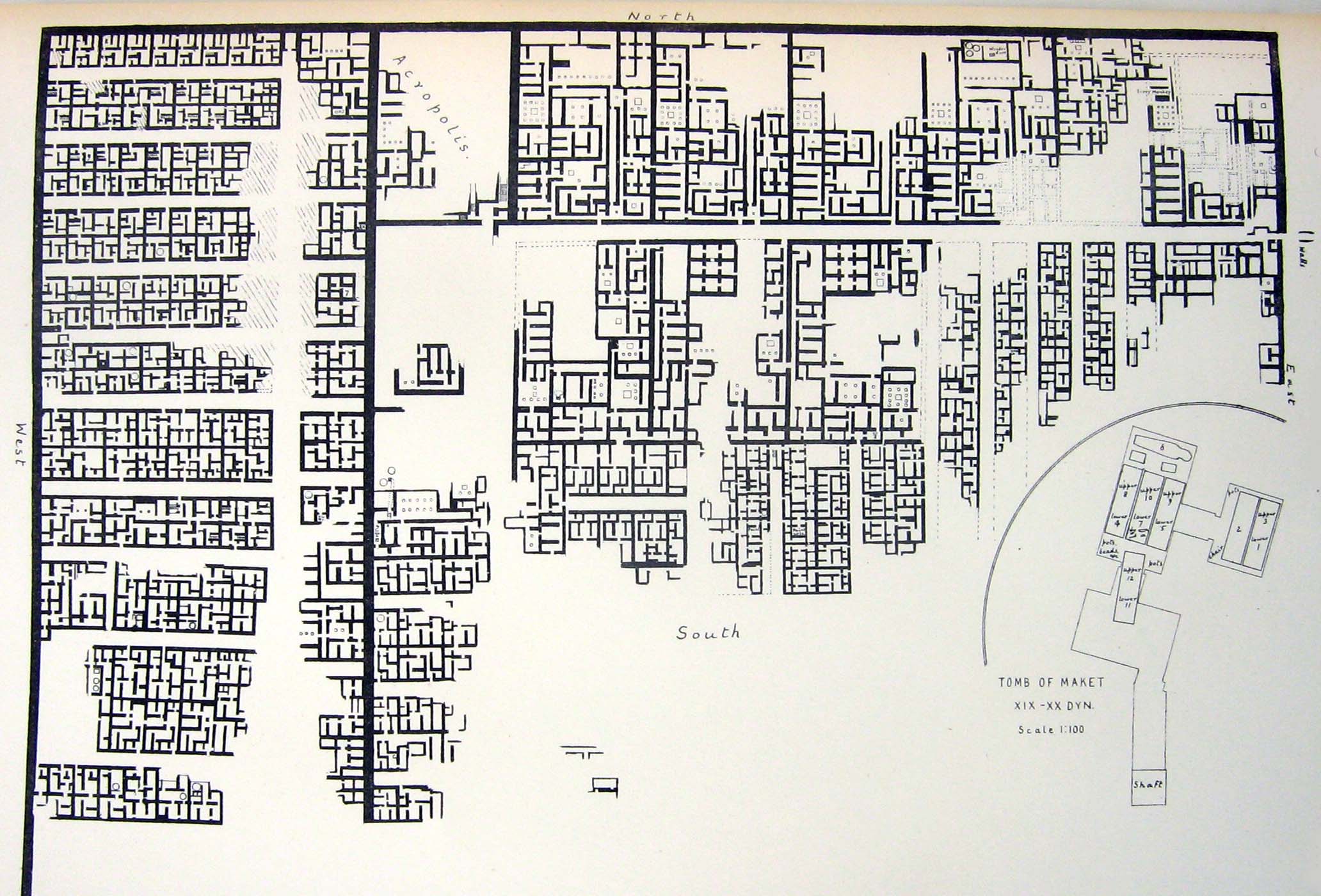|
Tupik, Zabaykalsky Krai
Tupik (russian: Тупик) is a rural locality (a '' selo'') and the administrative center of Tungiro-Olyokminsky District of Zabaykalsky Krai, Russia. Population: Geography Tupik is located in the Olyokma-Stanovik, north of Mogocha, on the Tungir river, a tributary of the Olyokma. History It was founded in 1911 as a result of an unsuccessful attempt of paving the road to Yakutsk. The project was frozen because of the outbreak of World War I, which is how the village got its name (literally meaning ''cul-de-sac''). During the war, many POWs were sent here. In April 1919, a partisan group of internationalists, mainly Hungarians, was exterminated by the Japanese expeditionary corps and ataman Grigory Semyonov's troops ( the Jewish regiment). In 1938, Tupik was chosen to be the administrative center of Tungiro-Olyokminsky District. Russians, Ukrainians, and Evenks The Evenks (also spelled Ewenki or Evenki based on their endonym )Autonym: (); russian: Эвенки () ... [...More Info...] [...Related Items...] OR: [Wikipedia] [Google] [Baidu] |
Russia
Russia (, , ), or the Russian Federation, is a List of transcontinental countries, transcontinental country spanning Eastern Europe and North Asia, Northern Asia. It is the List of countries and dependencies by area, largest country in the world, with its internationally recognised territory covering , and encompassing one-eighth of Earth's inhabitable landmass. Russia extends across Time in Russia, eleven time zones and shares Borders of Russia, land boundaries with fourteen countries, more than List of countries and territories by land borders, any other country but China. It is the List of countries and dependencies by population, world's ninth-most populous country and List of European countries by population, Europe's most populous country, with a population of 146 million people. The country's capital and List of cities and towns in Russia by population, largest city is Moscow, the List of European cities by population within city limits, largest city entirely within E ... [...More Info...] [...Related Items...] OR: [Wikipedia] [Google] [Baidu] |
Yakutsk
Yakutsk (russian: Якутск, p=jɪˈkutsk; sah, Дьокуускай, translit=Djokuuskay, ) is the capital city of the Sakha Republic, Russia, located about south of the Arctic Circle. Fueled by the mining industry, Yakutsk has become one of Russia's most rapidly growing regional cities, with a population of 355,443 at the 2021 Census. Yakutsk — where the average annual temperature is , winter high temperatures are consistently well below , and the record low is ,Погода в Якутске. Температура воздуха и осадки. Июль 2001 г. (in Russian) — is the coldest city in the world. Yakutsk is also the largest city located in |
Ukrainians
Ukrainians ( uk, Українці, Ukraintsi, ) are an East Slavs, East Slavic ethnic group native to Ukraine. They are the seventh-largest nation in Europe. The native language of the Ukrainians is Ukrainian language, Ukrainian. The majority of Ukrainians are Eastern Orthodox Church, Eastern Orthodox Christians. While under the Polish–Lithuanian Commonwealth, the Austrian Empire, and then Austria-Hungary, the East Slavic population who lived in the territories of modern-day Ukraine were historically known as Ruthenians, referring to the territory of Ruthenia, and to distinguish them with the Ukrainians living under the Russian Empire, who were known as Little Russians, named after the territory of Little Russia. Cossacks#Ukrainian Cossacks, Cossack heritage is especially emphasized, for example in the Shche ne vmerla Ukraina, Ukrainian national anthem. Ethnonym The ethnonym ''Ukrainians'' came into wide use only in the 20th century after the territory of Ukraine obtained ... [...More Info...] [...Related Items...] OR: [Wikipedia] [Google] [Baidu] |
Russians
, native_name_lang = ru , image = , caption = , population = , popplace = 118 million Russians in the Russian Federation (2002 ''Winkler Prins'' estimate) , region1 = , pop1 = approx. 7,500,000 (including Russian Jews and Russian Germans) , ref1 = , region2 = , pop2 = 7,170,000 (2018) ''including Crimea'' , ref2 = , region3 = , pop3 = 3,512,925 (2020) , ref3 = , region4 = , pop4 = 3,072,756 (2009)(including Russian Jews and Russian Germans) , ref4 = , region5 = , pop5 = 1,800,000 (2010)(Russian ancestry and Russian Germans and Jews) , ref5 = 35,000 (2018)(born in Russia) , region6 = , pop6 = 938,500 (2011)(including Russian Jews) , ref6 = , region7 = , pop7 = 809,530 (2019) , ref7 ... [...More Info...] [...Related Items...] OR: [Wikipedia] [Google] [Baidu] |
Jewish Regiment (Russian Civil War)
The Jewish Legion (1917–1921) is an unofficial name used to refer to five battalions of Jewish volunteers, the 38th to 42nd (Service) Battalions of the Royal Fusiliers in the British Army, raised to fight against the Ottoman Empire during the First World War. An evolution of the Zion Mule Corps that was raised in 1915 and fought in Gallipoli, the Jewish Legion started being formed in August 1917 with the formation of one Jewish battalion. The legion would incorporate a number of Russian Jews and later Jews from the United States and Canada with the unit reaching five battalions. The Legion fought in the Battle of Megiddo, before being reduced to one battalion, known as First Judaeans. Background In November 1914, David Ben-Gurion and Yitzhak Ben-Zvi proposed to the Ottoman commander in Jerusalem that a Jewish Legion could be raised to fight with the Turkish Army. The proposal was approved and training began but was soon cancelled by Djemal Pasha, who became known for p ... [...More Info...] [...Related Items...] OR: [Wikipedia] [Google] [Baidu] |
Grigory Mikhaylovich Semyonov
Grigory Mikhaylovich Semyonov, or Semenov (russian: Григо́рий Миха́йлович Семёнов; September 25, 1890 – August 30, 1946), was a Japanese-supported leader of the White movement in Transbaikal and beyond from December 1917 to November 1920, a lieutenant general, and the ''ataman'' of Baikal Cossacks (1919). Semyonov was also a prominent figure in the White Terror. Early life and career Semyonov, born in the Transbaikal region of eastern Siberia. His father, Mikhail Petrovich Semyonov, was Russian; his mother was a Buryat. Semyonov spoke Mongolian and Buryat fluently. He joined the Imperial Russian Army in 1908 and graduated from Orenburg Military School in 1911. Commissioned first as a khorunzhiy (cornet or lieutenant), he rose to the rank of ''yesaul'' (Cossack captain), distinguished himself in battle against the Germans and the Austro-Hungarians in World War I, and earned the Saint George's Cross for courage.Bisher, ''White Terror''. Pyotr Wran ... [...More Info...] [...Related Items...] OR: [Wikipedia] [Google] [Baidu] |
Ataman
Ataman (variants: ''otaman'', ''wataman'', ''vataman''; Russian: атаман, uk, отаман) was a title of Cossack and haidamak leaders of various kinds. In the Russian Empire, the term was the official title of the supreme military commanders of the Cossack armies. The Ukrainian version of the same word is ''hetman''. ''Otaman'' in Ukrainian Cossack forces was a position of a lower rank. Etymology The etymologies of the words ''ataman'' and ''hetman'' are disputed. There may be several independent Germanic and Turkic origins for seemingly cognate forms of the words, all referring to the same concept. The ''hetman'' form cognates with German ''Hauptmann'' ('captain', literally 'head-man') by the way of Czech or Polish, like several other titles. The Russian term ''ataman'' is probably connected to Old East Slavic ''vatamanŭ,'' and cognates with Turkic ''odoman'' (Ottoman Turks). The term ''ataman'' may had also a lingual interaction with Polish ''hetman'' and German ''h ... [...More Info...] [...Related Items...] OR: [Wikipedia] [Google] [Baidu] |
Hungarians
Hungarians, also known as Magyars ( ; hu, magyarok ), are a nation and ethnic group native to Hungary () and historical Hungarian lands who share a common culture, history, ancestry, and language. The Hungarian language belongs to the Uralic language family. There are an estimated 15 million ethnic Hungarians and their descendants worldwide, of whom 9.6 million live in today's Hungary. About 2–3 million Hungarians live in areas that were part of the Kingdom of Hungary before the Treaty of Trianon in 1920 and are now parts of Hungary's seven neighbouring countries, Slovakia, Ukraine, Romania, Serbia, Croatia, Slovenia, and Austria. Significant groups of people with Hungarian ancestry live in various other parts of the world, most of them in the United States, Canada, Germany, France, the United Kingdom, Chile, Brazil, Australia, and Argentina. Hungarians can be divided into several subgroups according to local linguistic and cultural characteristics; subgroups with distinc ... [...More Info...] [...Related Items...] OR: [Wikipedia] [Google] [Baidu] |
Internationalism (politics)
Internationalism is a political principle that advocates greater political or economic cooperation among State (polity), states and nations. It is associated with other political movements and ideologies, but can also reflect a doctrine, belief system, or movement in itself.Warren F. Kuehl, doi:10.1111/j.1468-0130.1986.tb00536.x, Concepts of Internationalism in History, July 1986. Supporters of internationalism are known as internationalists and generally believe that humans should unite across national, political, cultural, racial, or class boundaries to advance their common interests, or that governments should cooperate because their mutual long-term interests are of greater importance than their short-term disputes. Internationalism has several interpretations and meanings, but is usually characterized by opposition to nationalism and isolationism; support for international institutions, such as the United Nations; and a cosmopolitan outlook that promotes and respects other c ... [...More Info...] [...Related Items...] OR: [Wikipedia] [Google] [Baidu] |
Partisan (military)
A partisan is a member of an irregular military force formed to oppose control of an area by a foreign power or by an army of military occupation, occupation by some kind of insurgent activity. The term can apply to the field element of resistance movements. The most common use in present parlance in several languages refers to Resistance during World War II, occupation resistance fighters during World War II, especially under the Yugoslav Partisans, Yugoslav partisan leader Josip Broz Tito. History before 1939 The initial concept of partisan warfare involved the use of militia , troops raised from the local population in a war zone (or in some cases regular forces) who would operate behind enemy front line , lines to disrupt communications, seize posts or villages as forward-operating bases, ambush convoys, impose war taxes or contributions, raid logistical stockpiles, and compel enemy forces to disperse and protect their base of operations. George Satterfield has analyse ... [...More Info...] [...Related Items...] OR: [Wikipedia] [Google] [Baidu] |
Cul-de-sac
A dead end, also known as a cul-de-sac (, from French for 'bag-bottom'), no through road or no exit road, is a street with only one inlet or outlet. The term "dead end" is understood in all varieties of English, but the official terminology and traffic signs include many different alternatives. Some of these are used only regionally. In the United States and other countries, ''cul-de-sac'' is often not an exact synonym for ''dead end'' and refers to dead ends with a circular end, allowing for easy turning at the end of the road. In Australia and Canada, they are usually referred to as a ''court'' when they have a bulbous end. Dead ends are added to road layouts in urban planning to limit through-traffic in residential areas. While some dead ends provide no possible passage except in and out of their road entry, others allow cyclists, pedestrians or other non-automotive traffic to pass through connecting easements or paths, an example of filtered permeability. The Internation ... [...More Info...] [...Related Items...] OR: [Wikipedia] [Google] [Baidu] |
World War I
World War I (28 July 1914 11 November 1918), often abbreviated as WWI, was one of the deadliest global conflicts in history. Belligerents included much of Europe, the Russian Empire, the United States, and the Ottoman Empire, with fighting occurring throughout Europe, the Middle East, Africa, the Pacific, and parts of Asia. An estimated 9 million soldiers were killed in combat, plus another 23 million wounded, while 5 million civilians died as a result of military action, hunger, and disease. Millions more died in genocides within the Ottoman Empire and in the 1918 influenza pandemic, which was exacerbated by the movement of combatants during the war. Prior to 1914, the European great powers were divided between the Triple Entente (comprising France, Russia, and Britain) and the Triple Alliance (containing Germany, Austria-Hungary, and Italy). Tensions in the Balkans came to a head on 28 June 1914, following the assassination of Archduke Franz Ferdin ... [...More Info...] [...Related Items...] OR: [Wikipedia] [Google] [Baidu] |






